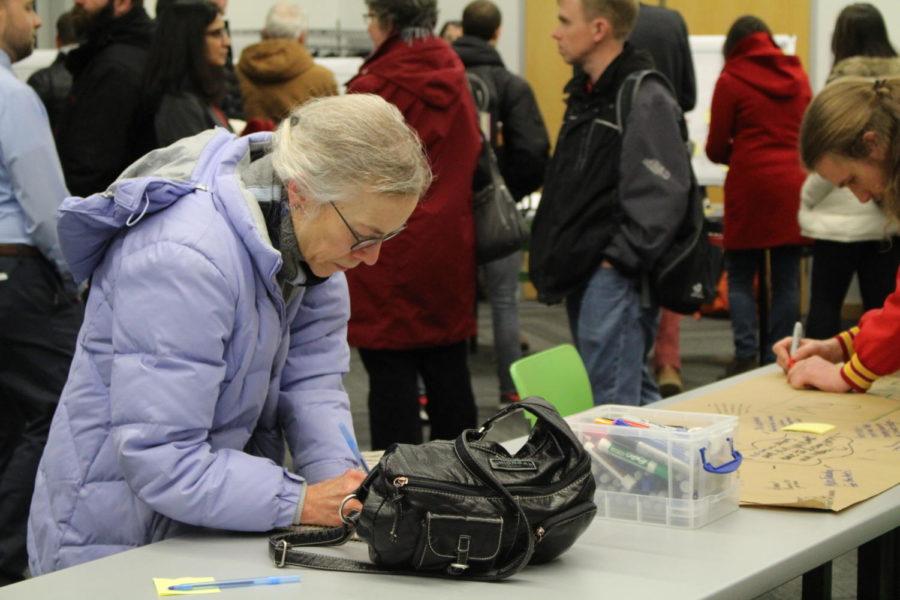Ames residents focus on climate change, annexation at first Comprehensive Plan open house
February 5, 2019
The city hosted an open house Tuesday night in the Ames Public Library Auditorium to get public input for the Comprehensive Plan (CP), which seeks to develop Ames economically and architecturally through the year 2040.
Those who attended the workshop, which was held across two sessions throughout the day, freely roamed the auditorium, listened to city staff and contractors and provided feedback in the form of written comments. More than 200 people attended the open house.
Residents said they were excited about the CP but also voiced their concerns about climate change, building practices and potential annexation in the future.
“I would like to see more focus on sustainability, connectivity and public transportation,” said Jeff White, a geologist and Ames resident of 30 years. “I’m glad to see a plan that includes some of that, but I want to see more emphasis on true sustainability.”
White said that Ames really needs to think about smart, significant changes to infrastructure in the coming years. A report issued by the International Panel on Climate Change indicated a drastic need for communities to reduce carbon emissions.
“We need to greatly reduce fossil fuel emissions,” White said. “We’re going to have to plan for some real problems coming our way.”
The point of the open house was to get input from concerned residents like White so the plan can be fitted to the needs and wants of all Ames communities.
“We’re right at the beginning of the process and we want to know what people are thinking,” said Cory Scott, a planner with RDG Planning and Design that the contractors hired to work on the CP. “It’s good for people to get involved and contribute ideas to the plan. We want to connect with everyone throughout the process.”
Many attendees live around the city limits of Ames in areas referred to as “the fringe,” and they voiced concerns to City Planner Eloise Sahlstrom about being unwillingly annexed into the city as Ames expands.
“A lot of these people are on gravel roads, have their own wells and independent septic systems,” Sahlstrom said. “Their properties function just fine without being part of the system.”
When properties are absorbed into city limits, they typically pay higher taxes to account for road maintenance, police and fire department services and water utilities. Some fringe residents want to be absorbed to increase the selling value of their properties, Sahlstrom said.
She explained that state law can work a few different ways with annexation. Sometimes it requires 100 percent of residents in the particular community to consent to being absorbed, but other cases only call for an 80 percent majority.
“We’re listening to people’s concerns, and the people that want to be annexed are going about it democratically,” Sahlstrom said.
The next open house will be hosted Feb. 25 in the Iowa State Research Park. Zoey Mauck, a senior in landscape architecture and intern at RDG, said it’s important for students to contribute to the CP. Even if many of them don’t stay in Ames after graduation, the effects of the CP will be felt by Iowa State students for decades to come.
“Just because you aren’t in Ames doesn’t mean what happens here isn’t important,” Mauck said.
Ian Steenhoek, UROC senator of Iowa State’s student government, said that these open houses are a good way for students to learn about getting involved in their community.
“This is a great way to share your ideas about how Ames can grow,” Steenhoek said. “And I imagine [RDG and city staff] are going to take every comment we give seriously. Students should have a say in how Ames looks in 20 years.”
















